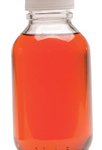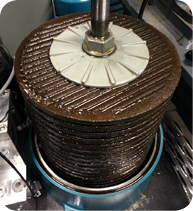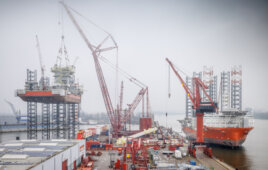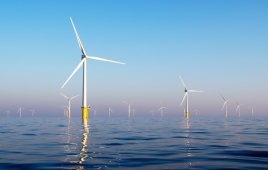
Based on research, replacing a 10-micron filter with a 3-micron version will increase oil life by a factor of three.
Justin Stover, Sales Manager, CC Jensen Inc., www.ccjensen.com
Gearboxes that run dirty usually have short lives than those that run clean. Gears, bearings, and the lubricant all suffer greatly from contamination. It has long been recognized that clean oil will improve the reliability and lifetime of these vital components. Therefore, it is a paradox that many wind turbines are sold without filter systems capable of maintaining clean gear oil.
Not all gearboxes suffer from severe contamination but all gearboxes should have contamination control systems in place that will give the gears, bearings and oil a fighting chance to survive.
Gearbox applications in the wind energy industry present many challenges when it comes to achieving and maintaining an aggressive level of oil cleanliness. But these challenges can be met. Tens of thousands of gearboxes around the world have benefited from a thoughtful approach to filtration. The first step is to understand the importance of clean oil and the proper approach to filtration.
The importance of clean oil
It has been estimated that 80% of all breakdowns in lubricated machines are related to contamination in the oil. Research going back nearly four decades dependably established that gear and bearing life can be increased by up to seven times simply by upgrading the filtration system of a gearbox. For instance, in 1979 a ground-breaking study at London’s Imperial College proved that rolling element bearings in gearboxes can have a life extension factor of six by upgrading the filter system from a 40 micron to a 3 micron filter.

The sawtooth curve illustrates the advantages of dedicated Offline filters. The difference between the two dotted lines is the difference in contamination levels maintained by mobile filtration (upper line) and continuous filtration with CJC Offline filter (the lower line).
One of the conclusions from their research was “Replacing 40-25µm filters by units rated at 3µm absolute is to be recommended for gearboxes. Such action should lead to improved reliability, longer periods between overhaul, cheaper overhauls, and consequent reductions in ownership costs. Times between oil changes, where relevant, should be substantially increased.”
Has this knowledge been applied across the board to benefit owners and operators of modern wind turbines? No. Despite extensive education, reliable data. and countless case studies, there are still tens of thousands of gearboxes that do not have adequate filtration built in. Every day more wind turbines roll out of factories with poorly designed filtration systems. Why is that? In part, the problem seems to be a misunderstanding that inline filters alone will keep the gear oil clean, hence the gearbox system as a whole will be “clean”. Inline filters, while necessary, should not be relied upon to maintain oil cleanliness. What other options are there for filtration?
Offline filters stretch gear, bearing, and oil life

The oil from a gearbox shows contamination at a critical level. The so-called inline filer system, installed in the oil cooler circuit, was inadequate to maintain oil cleanliness.
 Experienced OEM’s and technically savvy owners and operators have found through practical experience that filtering oil with highly efficient, Offline filters can extend component life by at least 50% and double gear oil life.
Experienced OEM’s and technically savvy owners and operators have found through practical experience that filtering oil with highly efficient, Offline filters can extend component life by at least 50% and double gear oil life.
Consider a real world example of a >1.5 MW wind turbine gearbox equipped with a 10 micron inline filter and a desiccant breather. Contamination had reached a critical level. The so-called Inline filter system, installed in the oil cooler circuit, was inadequate to maintain oil cleanliness.
 A solution for better results and higher security was to install an Offline filter system. The Offline filter uses a low flow pump to constantly circulate and purify the oil. In the Offline filter system a finer filter element can be installed, typically 3 micron.
A solution for better results and higher security was to install an Offline filter system. The Offline filter uses a low flow pump to constantly circulate and purify the oil. In the Offline filter system a finer filter element can be installed, typically 3 micron.
An Offline filter must reach a required cleanliness level as a function of filter efficiency, flow rate, pre-existing contamination level, and oil capacity. A filter vendor can assist in calculating the time required to flush and clean a gearbox.
The Offline filter must run long enough to clean the oil to a required level. In this example, a 3-micron filter with a flow rate of 40 gallons per hour was selected. After 72 hours of continuous filtration the oil cleanliness was drastically improved. The clean oil in the bottle is a sample of used oil from the same turbine referenced earlier. It’s easy to see the oil cleanliness level has been significantly improved.
Offline filtering is most effective when done consistently as a dedicated process. This allows for filtration when

This cleaner oil comes from the same gearbox as the oil above, but after the gearbox was refit and run with an Offline filter.
the oil is warmest and thoroughly mixed. At higher temperatures the oils viscosity is reduced and contaminants will be suspended for easier removal.
Portable or mobile filters can serve as a temporary Offline filter. However, are generators, braking systems or oil coolers installed as mobile components in the nacelle? No. Therefore, Offline filters should be considered a permanent component of the nacelle to maintain oil cleanliness.
Consider this case history. An Owner-Operator was experiencing significant losses due to high contamination levels in their turbines. The decision was made to upgrade to an Offline filter. In 4 months of operation the contamination was reduced by over 90%. “Since adding the Offline oil filter, our oil analysis has showed considerable improvement” says the O&M Director. “Our gearbox has yet to have a single bearing failure, vibration analysis alarm, or high-heat signature. We are likely to save major repairs that may cost over $900,000.” Improvements in cleanliness with time demonstrates the improvement in oil cleanliness. WPE
What exactly is an offline filter?
A system of filtration in which a portion of the total oil volume passes through a filter having its own circulating pump operating in parallel to the main system.
The word “Offline” can mean different things in the power generation business. Offline to a power plant operator generally does not create a warm and fuzzy feeling. As it relates to filtration, Offline is an important distinction because it identifies where and how a filter operates. The term Offline simply refers to the fact that the filter operates completely independent of the machine it is installed upon. While critical to the overall function and health of the machine, the Offline filter is designed to run on its own. In a wind turbine gearbox application, the Offline filter will operate continuously, pulling oil from the gearbox, purifying it and returning it to the gearbox through an available port. This takes place whether or not the wind turbine is spinning or idle. This ensures that clean and dry oil is available at critical starts and stops when the gearbox is most vulnerable to damage.
A common phrase to describe an Offline filter is a so-called “kidney loop” filter. As the name implies, the filter operates similar to a dialysis machine that filters the blood of patient with failing kidneys. This “kidney loop” process involves drawing oil out of the dirty system and passing it through highly efficient filters to remove contaminants. Offline filtration units are simple. Typically they include a robust electric motor and highly dirt-tolerant gear pump that pushes oil through a fine filter element.
Because oil is often referred to as the lifeblood of a gearbox, it is fitting that “kidney loop” or Offline filters are employed to keep

The Offline filter element has been in service for a while. An examination shows it has removed a high level of iron and oxidation.
lubricant health in optimum condition.
The oil from a gearbox shows contamination at a critical level. The so-called Inline filter system, installed in the oil cooler circuit, was inadequate to maintain oil cleanliness.
This cleaner oil comes from the same gearbox as the oil above, but after the gearbox was refit and run with an Offline filter.
A checklist for upgrading to offline filters
The following measures improve oil cleanliness in wind-turbine gearboxes:
- Define the target oil cleanliness level for each gearbox and ensure that adequate breathers are installed
- Electrical power considerations for the filter motor include the use of single or three phase, and the availability of power in the top box
- Provide adequate motor protection with thermal overloads
- Connect the suction line to the lowest available port on the gearbox (i.e. the oil drain).
- Minimize the number of elbows and keep the suction and return lines as short as possible
- Make sure that a sample port is incorporated for bottle sampling
- Ensure that a pressure safety valve is integrated into the pump in the event of dead-heading
- Confirm that the filter is a depth type filter with a dirt-holding capacity that will provide at least 12 months of uninterrupted service
- Select a filter media that will simultaneously remove moisture and oxidation
- Monitor oil routinely with spectrographic and ferrographic analysis, particle counts, acid number, viscosity and water content
- Examine used filter elements for debris and contaminants
Filed Under: Bearings, Lubricants, News







Excellent article. Not enough can be said about lubrication of mechanical devices. Include in this the special attention deserved by seals, chamber hot spots and vapor pressure monitoring.